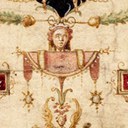0085 Graphic Intersections: Erga, Parerga and Pro-Erga
Identifiers (Article)
Identifiers (Files)
Abstract
The place where design and art intersect is drawing with its elastic capability of functioning as the whole, the preparatory and the supplementary work. Drawing doesn't only occur at the level of individual practice but can be part of wider "graphic events" where concerted acts of recording, performing, inventing and disseminating link diverse visual practices across time. Two such discursive events are discussed as paradigms: the accidental finding of the Villa Aurea in the 1480s in Rome and Alois Senefelder's lithographic publication of the illustrated Book of Hours of Emperor Maximilian I in 1808. Both were stylistically influential through the popularising of 'grotesque' configurations that unify heterogeneity through linearity.
Statistics

License

This work is licensed under a Creative Commons Attribution-NonCommercial-NoDerivatives 4.0 International License.




